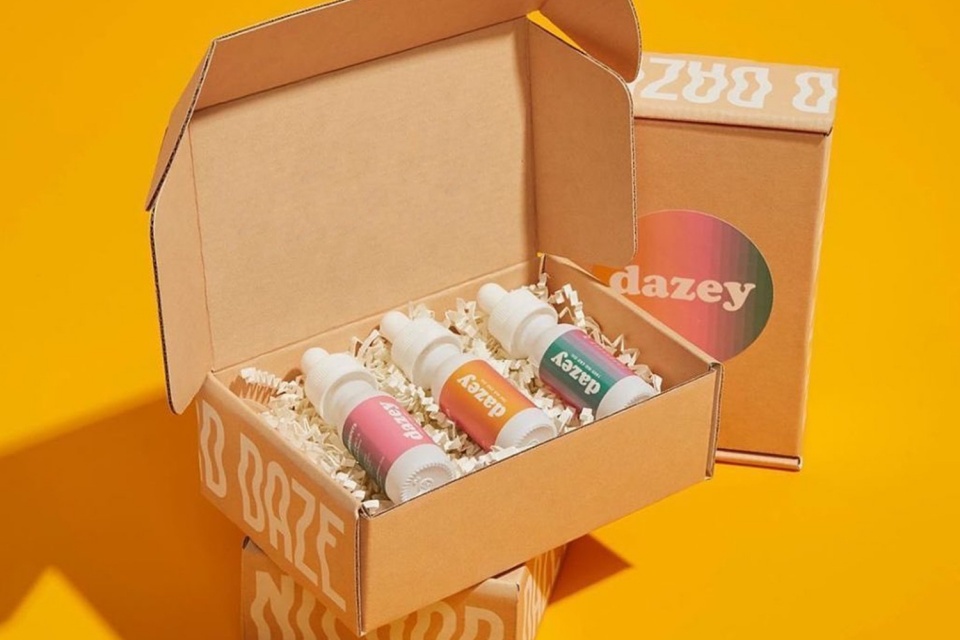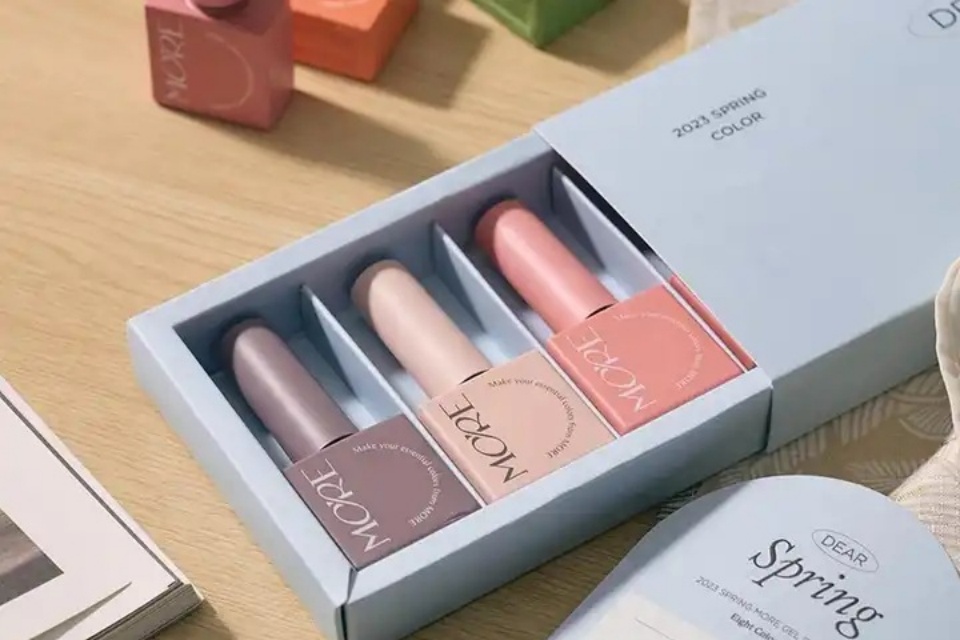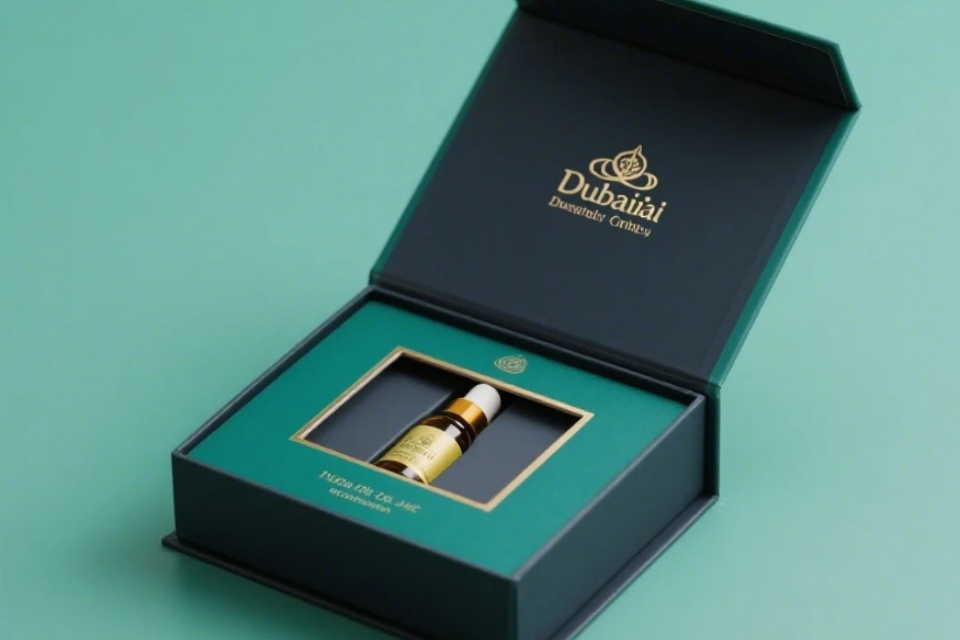Lastest News
Creative Packaging Design Ideas For Inspiration
Creative Packaging Design Ideas For Inspiration
Summary
Creative packaging design encompasses innovative and visually striking methods of product presentation, aimed at capturing consumer attention and enhancing brand identity. As an essential aspect of marketing, packaging design influences consumer behavior and preferences, making it a critical consideration for businesses across various industries. The growing demand for unique and functional packaging has spurred an array of creative ideas, from minimalist to maximalist designs, that challenge conventional norms and reflect contemporary trends in sustainability, technology, and consumer engagement.
Notable for its impact on branding and consumer perception, creative packaging design not only serves a functional purpose but also plays a pivotal role in storytelling and emotional connection. As consumers increasingly prioritize sustainability, brands are exploring eco-friendly materials and innovative designs that minimize waste while appealing to environmentally conscious shoppers. Furthermore, the integration of interactive elements, such as augmented reality features and personalized experiences, has transformed packaging into an engaging medium that fosters loyalty and enhances user experience.
Prominent examples of successful creative packaging design can be observed across various sectors, including food and beverage, beauty, and technology. These designs often highlight unique features, such as multi-functional use, sensory experiences, and striking visual aesthetics, which help differentiate products in a competitive marketplace. However, the field is not without its challenges; issues such as regulatory compliance, production logistics, and shifting consumer preferences necessitate a strategic approach to packaging design that balances creativity with practicality.
Overall, the evolution of creative packaging design reflects broader cultural trends and consumer expectations, making it a dynamic area of exploration for brands looking to innovate and connect with their audience. The ongoing emphasis on sustainability, personalization, and technology will likely continue to shape the future of packaging, driving brands to seek out inventive solutions that resonate with modern consumers.
Historical Context
Packaging design has a rich history that reflects the evolution of technology, consumer behavior, and cultural influences over the centuries. The journey of packaging began with primitive methods used by ancient civilizations, where natural materials like leaves, baskets, and clay pots were employed to contain and transport goods. For instance, ancient Egyptians utilized papyrus and linen for wrapping, while the Greeks preferred clay pots for storing essentials such as wine and olive oil.
The Emergence of Branded Packaging
The late 19th century marked a significant turning point in the packaging landscape with the advent of branded packaging. Companies began to recognize the power of distinctive packaging as a means to differentiate their products in a crowded marketplace. Iconic examples from this era, like the Coca-Cola bottle and Hershey's chocolate bar wrapper, underscored the importance of visual identity and brand recognition.
Modern Influences and Technological Advances
As the 20th century progressed, several cultural movements influenced packaging design, most notably modernism between the 1940s and 1960s, which emphasized clean lines and minimalist graphics. Technological advancements during this period allowed for innovations in materials and printing techniques, paving the way for more sophisticated packaging designs that catered to changing consumer preferences.
With the rise of eco-consciousness in the late 20th century, packaging design began to pivot towards sustainability. This shift prompted the development of recyclable materials and a focus on reducing excess packaging, reflecting growing environmental concerns among consumers.
The Digital Revolution and Its Impact
The late 20th century also witnessed the onset of the digital revolution, which transformed the packaging industry. Innovative designs began to incorporate interactive elements, such as augmented reality (AR) features, enhancing consumer engagement and creating a more immersive experience. Today, packaging is no longer merely a functional container but a vital component of branding, storytelling, and consumer experience, reflecting the ongoing evolution driven by technological advancements and shifting societal values.
Elements of Effective Packaging Design
Functionality and Usability
Effective packaging design prioritizes functionality, ensuring that products are both practical and easy to use. Features such as resealable bags, easy-pour spouts, and stackable forms significantly enhance the user experience by making the packaging intuitive and convenient. Packaging should also protect the product during transportation, ensuring that items arrive in good condition while minimizing waste. This approach aligns with consumer preferences for sustainability and user-friendliness.
Quality Materials
The choice of materials in packaging plays a crucial role in its effectiveness. High-quality, sustainable materials not only appeal to eco-conscious consumers but also enhance a brand's image. Companies are increasingly adopting recycled and biodegradable options to meet growing consumer demand for environmentally friendly packaging solutions. Notable brands, like Coca-Cola, have pledged to use a significant percentage of recycled content in their packaging, illustrating a commitment to sustainability.
Aesthetic Appeal
Visual appeal is a vital component of effective packaging design. Attractive designs that incorporate bold colors, clear typography, and engaging imagery can draw consumer attention and create a memorable brand identity. Simple yet elegant packaging can evoke feelings of quality and trust, as seen in brands like Apple and Tiffany & Co., which use minimalism and distinctive colors to connect emotionally with their audience.
Authenticity and Transparency
In an era where consumers are increasingly conscious of brand values, authenticity in packaging design is paramount. Packaging that transparently communicates a brand's sustainability efforts, product ingredients, and ethical practices fosters trust and loyalty among consumers. Engaging storytelling through packaging design can enhance the overall customer experience and create a lasting impression.
Inclusive Design
Considering the diverse needs of consumers, inclusive packaging design is becoming essential. This involves creating packaging that is accessible to individuals with varying physical and sensory abilities. Thoughtful design choices, such as using larger text or distinguishable colors, demonstrate a brand's commitment to inclusivity and can enhance usability for all consumers. Brands that prioritize inclusive design are likely to build stronger connections with a broader customer base.
Innovation and Trends
The landscape of packaging design is continually evolving, driven by trends such as sustainability and bold visuals. As consumers become more environmentally conscious, innovative packaging solutions that utilize eco-friendly materials are increasingly in demand. Simultaneously, eye-catching typography and vibrant color schemes are being employed to capture consumer attention in crowded marketplaces. Companies that adapt to these trends can enhance their market presence and appeal to modern consumers.
Innovative Packaging Design Ideas
Creative packaging design is essential for brands looking to stand out in a competitive market. Here are some innovative ideas that highlight current trends and approaches in packaging design.
Minimalist Design
Minimalist packaging has gained significant traction due to its focus on simplicity and functionality. This design style emphasizes clean lines, monochromatic color palettes, and essential graphics, allowing the product to take center stage. Notable brands like Apple utilize minimalist design to convey a sense of elegance and innovation, featuring sleek boxes with minimal text and prominent product images. The philosophy of "less is more" not only enhances visual appeal but also aids in brand recognition, making products easier to identify on crowded shelves.
Maximalist Design
In contrast to minimalism, maximalist design embraces boldness and complexity. This approach is characterized by vibrant colors, layered patterns, and playful motifs that can create an eye-catching aesthetic. Maximalist packaging appeals to consumers seeking excitement and vibrancy in their product choices, often using a “more is more" philosophy to capture attention and evoke emotion.
Functional Design
Functional packaging enhances usability by incorporating design elements that serve dual purposes. For example, a food container might double as a serving bowl, catering to eco-conscious consumers by reducing waste. Good functional design also considers user experience, with features like easy-open designs and resealable bags that contribute to overall satisfaction. Brands are increasingly prioritizing practicality, ensuring that packaging not only protects the product but is also user-friendly and efficient.
Interactive Elements
Augmented reality (AR) and other interactive features are becoming increasingly popular in packaging design. These elements engage consumers by providing additional content and experiences through their smartphones. For instance, scanning a QR code on a beverage label might reveal games or brand stories, creating memorable interactions that can encourage brand loyalty and repeat purchases. The integration of technology into packaging not only enhances consumer engagement but also allows brands to gather valuable data on customer preferences.
Sustainable Design
With a growing emphasis on environmental responsibility, sustainable packaging has become a vital aspect of innovative design. Brands are exploring eco-friendly materials and minimalistic designs that reduce waste and appeal to environmentally conscious consumers. Utilizing recycled materials and designing packaging that is easy to recycle are key strategies for brands looking to improve their sustainability credentials while appealing to a broader audience.
Personalization
Personalized packaging offers a unique opportunity for brands to connect with consumers. By leveraging data, brands can create custom experiences that cater to individual preferences. This approach not only enhances the product experience but also fosters direct relationships between brands and consumers. As technology evolves, the potential for personalized packaging will continue to grow, offering brands new ways to engage and retain customers.
Through the exploration of these innovative packaging design ideas, brands can find inspiration to enhance their product offerings and create memorable experiences for consumers.
Examples of Creative Packaging
Creative packaging design plays a crucial role in attracting consumers and differentiating products in a crowded market. Below are some notable examples that showcase innovative approaches to packaging across various industries.
Food and Beverage Packaging
The food and beverage sector has been particularly innovative in packaging design, often focusing on sustainability and functionality. Many brands have adopted eco-friendly materials, such as recycled paper and cardboard, to minimize waste and appeal to environmentally conscious consumers. For instance, some beverage brands have embraced refillable containers, reducing plastic waste while enhancing customer loyalty through durable, practical designs. A standout example includes a cosmetics company that introduced packaging that doubles as a makeup brush holder, merging practicality with aesthetic appeal.
Interactive and Sensory Packaging
Brands are increasingly using technology to create interactive packaging experiences. Innovations such as QR codes and augmented reality (AR) enhance consumer engagement by providing additional product information or immersive experiences. For example, a snack company successfully launched a limited-edition bag featuring eye-catching art that encouraged customers to share photos on social media platforms like Instagram and TikTok, generating buzz and attracting new customers.
Moreover, sensory experiences are becoming integral to packaging design. Unique textures, embossing, and vivid colors not only attract attention but also create memorable interactions with the product. The integration of scents in packaging, such as those found in perfumes or scented candles, adds another layer to consumer experience, turning simple purchases into multi-sensory moments.
Personalization and Limited Editions
Personalization has emerged as a popular trend in packaging, with many brands offering limited-edition designs to create a sense of exclusivity. This approach taps into consumer desires for unique and collectible items, further enhancing brand loyalty. Digital printing technology facilitates this trend, allowing for customized designs that resonate with individual consumers.
Historical Influences on Beauty Packaging
Exploring the evolution of beauty packaging reveals how historical trends influence contemporary designs. For instance, the 1920s saw the popularity of ornate compacts, while the 1960s brought forth Revlon's Couturine lipstick line, which combined collectible elements with functionality. Such historical insights can inspire current packaging challenges, encouraging brands to blend nostalgia with modern aesthetics.
Challenges in Packaging Design
Packaging design presents various challenges that can significantly impact the overall effectiveness and sustainability of a product's packaging. Understanding these challenges is crucial for businesses aiming to create innovative and eco-friendly packaging solutions.
Sustainability Concerns
One of the primary challenges in packaging design is the shift towards sustainability. As environmental issues become more pressing, the demand for sustainable packaging solutions has increased. Brands face the challenge of transitioning to reusable, recyclable, or biodegradable materials without compromising on quality or design aesthetics. While consumers are increasingly choosing products with sustainable packaging, the transition can be complex due to the higher costs associated with sustainable materials and the need for robust recycling infrastructure. Furthermore, companies must consider the entire lifecycle of their packaging, as packaging often represents only a small portion of a product's total carbon footprint.
Production and Logistics
The production scale also poses challenges in packaging design. Larger production runs can lead to cost efficiencies, but they may not be feasible for niche or limited-edition products. Additionally, logistical considerations, such as packaging assembly, storage, and distribution, must be planned meticulously to streamline operations and reduce costs. Inefficiencies in production processes, particularly in older machinery, can result in increased waste and energy consumption, making it challenging to adopt sustainable practices effectively.
Consumer Preferences and Market Trends
Consumer preferences continue to evolve rapidly, influencing packaging design trends. Today's consumers not only seek functionality but also aesthetic appeal and emotional connection with packaging. The challenge lies in creating designs that are visually striking while also conveying brand values and sustainability commitments. As the trend toward bold and maximalist designs emerges, brands must navigate the fine line between attracting attention and overwhelming potential customers with excessive visuals. Moreover, companies must remain agile, as consumer preferences can shift significantly within short timeframes, demanding quick adaptations in design strategies.
Regulatory Compliance
Another challenge faced by packaging designers is ensuring compliance with legal and industry regulations. Packaging must meet various standards, including safety requirements, labeling laws, and environmental regulations. Designers must stay informed about these requirements to avoid legal repercussions and ensure their packaging is both appealing and compliant with current laws.
Future Trends in Packaging Design
In the rapidly evolving world of packaging design, several key trends are anticipated to shape the future landscape. As brands seek to engage consumers and stand out in a crowded market, innovative and creative packaging solutions are becoming increasingly essential.
Bold and Maximalist Designs
One of the prominent trends for 2023 is the shift towards bold, bright, and maximalist designs. Moving away from the previously favored minimalistic approaches, brands are expected to embrace vibrant colors and intricate patterns that captivate consumer attention and convey brand identity more effectively. This shift reflects a growing desire for packaging that not only protects products but also makes a visual statement.
Sustainable Innovations
Sustainability continues to be a pivotal focus in packaging design. Innovations aimed at reducing environmental impact—such as biodegradable materials and advanced recycling processes—are gaining traction. Brands are increasingly adopting life cycle assessments to create packaging solutions that minimize ecological footprints and appeal to eco-conscious consumers. The integration of sustainable practices is not only beneficial for the environment but also aligns with evolving consumer expectations and regulatory demands.
Smart and Interactive Packaging
The rise of smart packaging, enhanced by technologies such as RFID tags and augmented reality (AR), is another significant trend. These innovations allow for real-time product tracking, authenticating products, and providing personalized consumer experiences. Interactive elements, such as QR codes that link to additional content or experiences, create immersive brand interactions that engage consumers on multiple levels. As technology continues to advance, the potential for integrating even more sophisticated functionalities into packaging design will only increase.
Personalization and Customization
Personalization is set to become a key strategy for brands looking to differentiate themselves in the market. Packaging that can be tailored to individual preferences-be it through custom messages, bespoke designs, or unique unboxing experiences—can foster deeper connections with consumers and enhance brand loyalty. As e-commerce continues to flourish, the ability to offer personalized packaging that reflects individual customer needs will be crucial for success.
Sensory Experiences
Future packaging designs are also expected to engage multiple senses, enhancing the overall consumer experience. Tactile elements, unique finishes, and even scent-infused packaging can create memorable interactions that resonate with consumers. This sensory engagement aims to elevate the unboxing experience and strengthen the emotional connection between the consumer and the brand.
Premiumization
The trend of premiumization in packaging is on the rise, with brands utilizing high-quality materials and innovative designs to convey luxury and exclusivity. Techniques such as textured surfaces, unique shapes, and limited-edition packaging can elevate a product's perceived value, making it stand out in a competitive marketplace. This approach allows brands to appeal to consumers seeking premium experiences while simultaneously enhancing their product offerings.
Categories
Latest News
Contact Us
Contact: Aaron Lee
Phone: +8613570866244
Tel: +8675529490260
Add: Li Songlang 2nd Industrial Zone,No.18,FengTang Rd,Guangming New District


